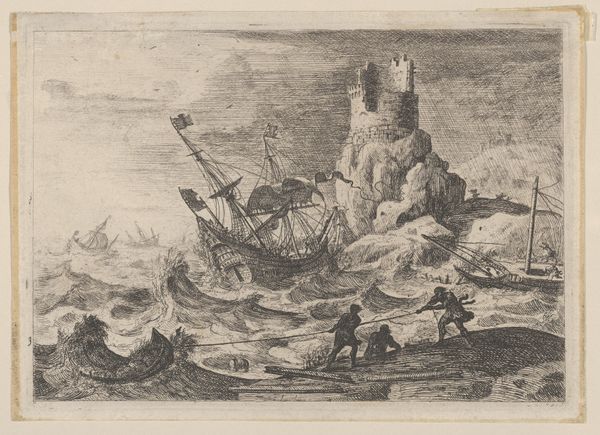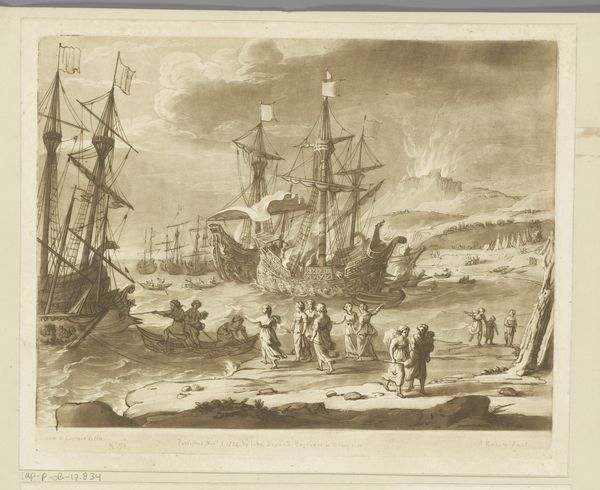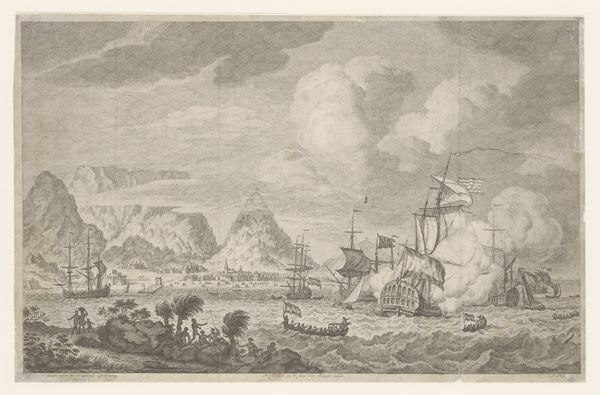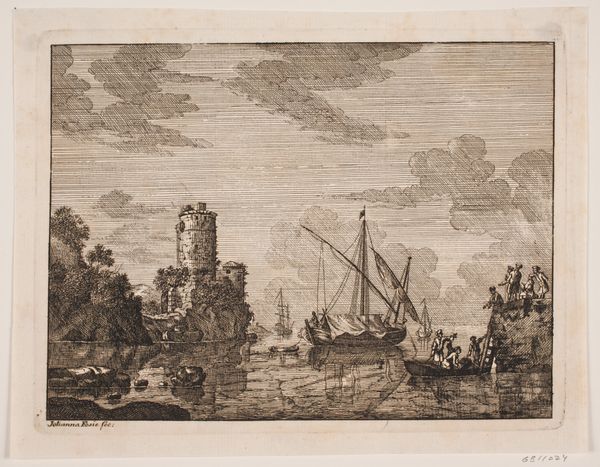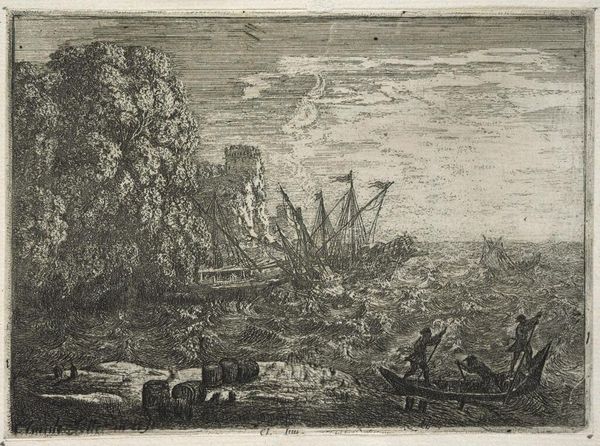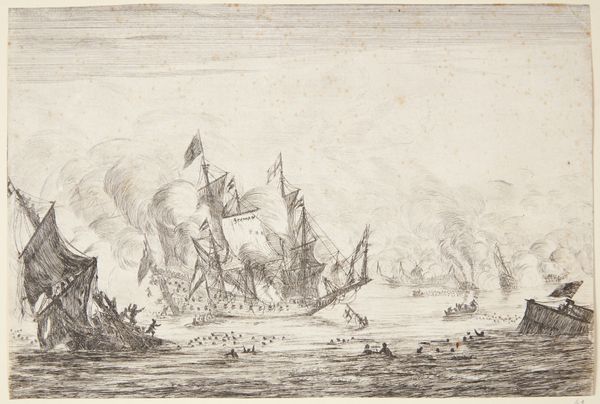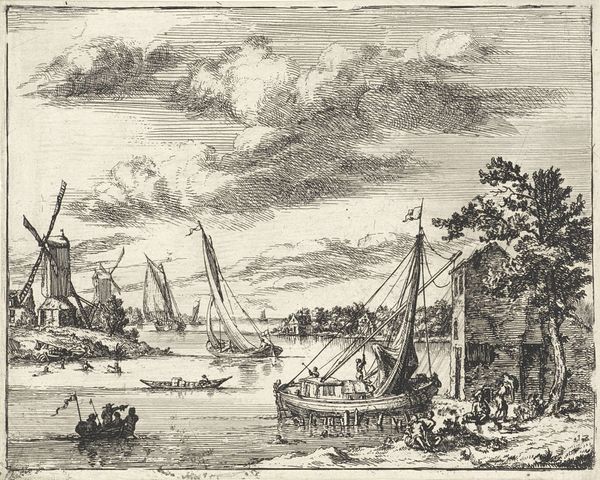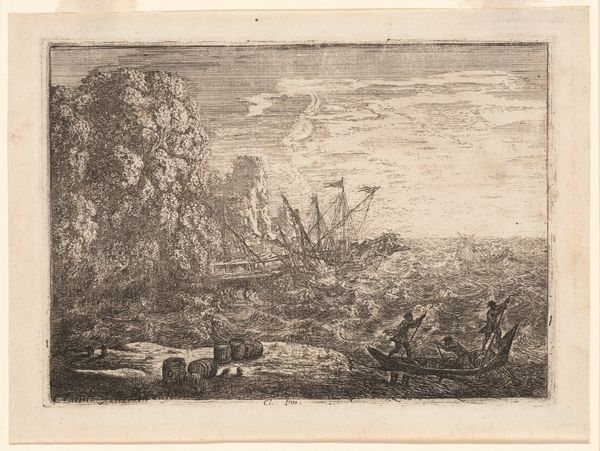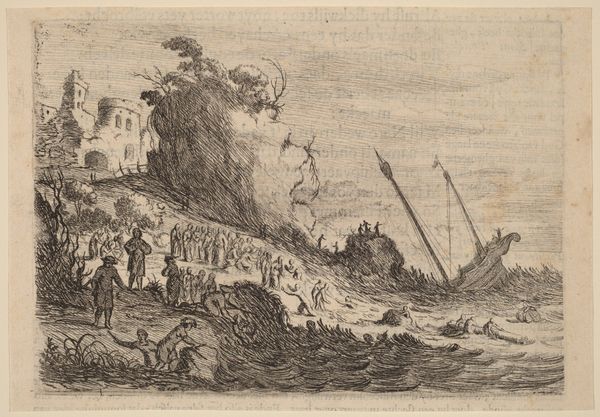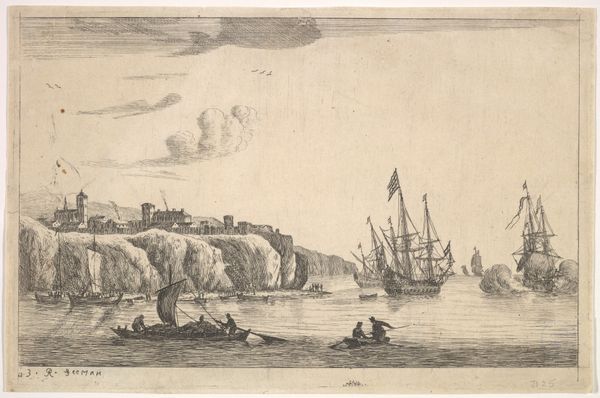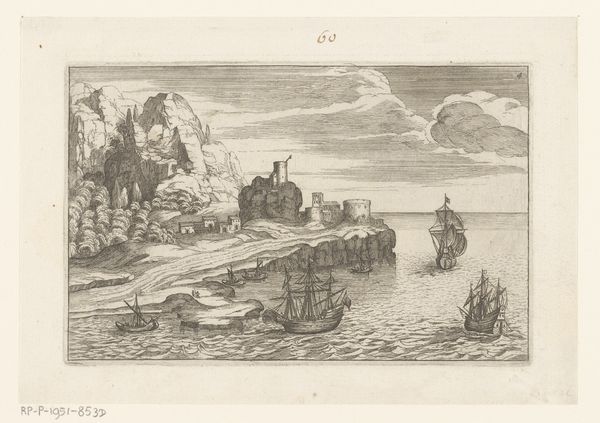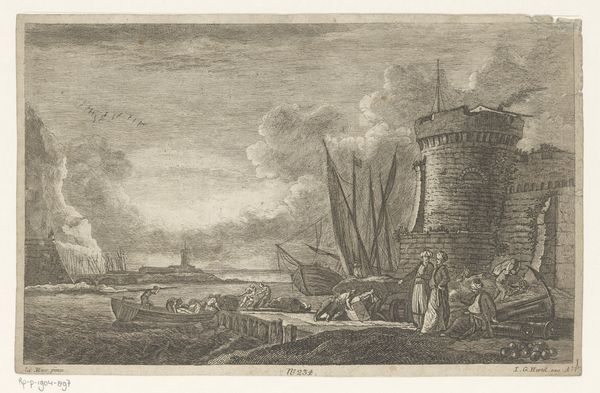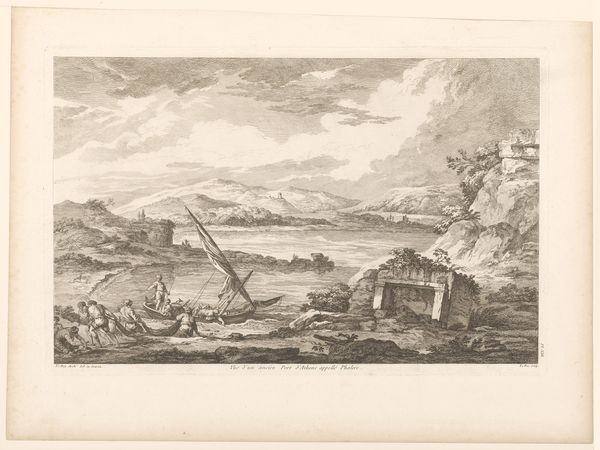
Seehafen, bei dem Leuchtturm liegt ein Schiff auf der Seite, um repariert zu werden
0:00
0:00
drawing, pencil
#
drawing
#
baroque
#
landscape
#
pencil
Copyright: Public Domain
Editor: So, this drawing by Abraham Willaerts is called "Seehafen, bei dem Leuchtturm liegt ein Schiff auf der Seite, um repariert zu werden," which translates to "Seaport, where a ship lies on its side by the lighthouse to be repaired." It looks to be made with pencil, in the Baroque style, and the detail is amazing for a sketch! What first strikes me is how bustling the harbor feels, despite the ship needing repairs. What's your interpretation? Curator: That's an interesting observation about the "bustling" feeling. Baroque art often functioned as a form of political theatre. Consider where something like this would have been displayed - perhaps not publicly, but among merchants or members of the Dutch East India Company. Does knowing that change the way we understand the artist's depiction of labor and commerce surrounding ship repair? Is it, perhaps, less about "bustling" and more about portraying efficient Dutch trade networks? Editor: That’s a good point. Thinking about who would have commissioned or bought this piece does change my perspective. It shifts from a general scene to a representation of Dutch maritime power. Do you think the lighthouse is significant in this context? Curator: Absolutely. The lighthouse serves not only as a practical aid to navigation, but also as a potent symbol of control and safety – particularly in the context of trade routes vital to Dutch prosperity. How does Willaerts position the lighthouse visually? Where does our eye go first? Is the lighthouse dwarfing the damaged vessel, and if so, what's being communicated through such juxtaposition? Editor: The lighthouse is definitely a focal point, almost centered in the composition. It's taller than the other buildings and even some of the natural landscape! It creates a sense of order amid the chaos of the damaged ship. I also see figures repairing the broken ship on the harbor. It now strikes me more about reinforcing stability rather than activity alone. Curator: Precisely. Viewing it through the lens of Dutch commercial interests reframes our understanding of the imagery. We move away from simply seeing a harbor scene to appreciating its function as a subtle declaration of economic strength and infrastructural prowess. Editor: I see what you mean. By considering the historical context, the drawing tells a story far beyond just ships and a lighthouse. Thank you for that valuable background. Curator: It's been a pleasure exploring it with you, demonstrating the crucial relationship between art and socio-political power.
Comments
No comments
Be the first to comment and join the conversation on the ultimate creative platform.
